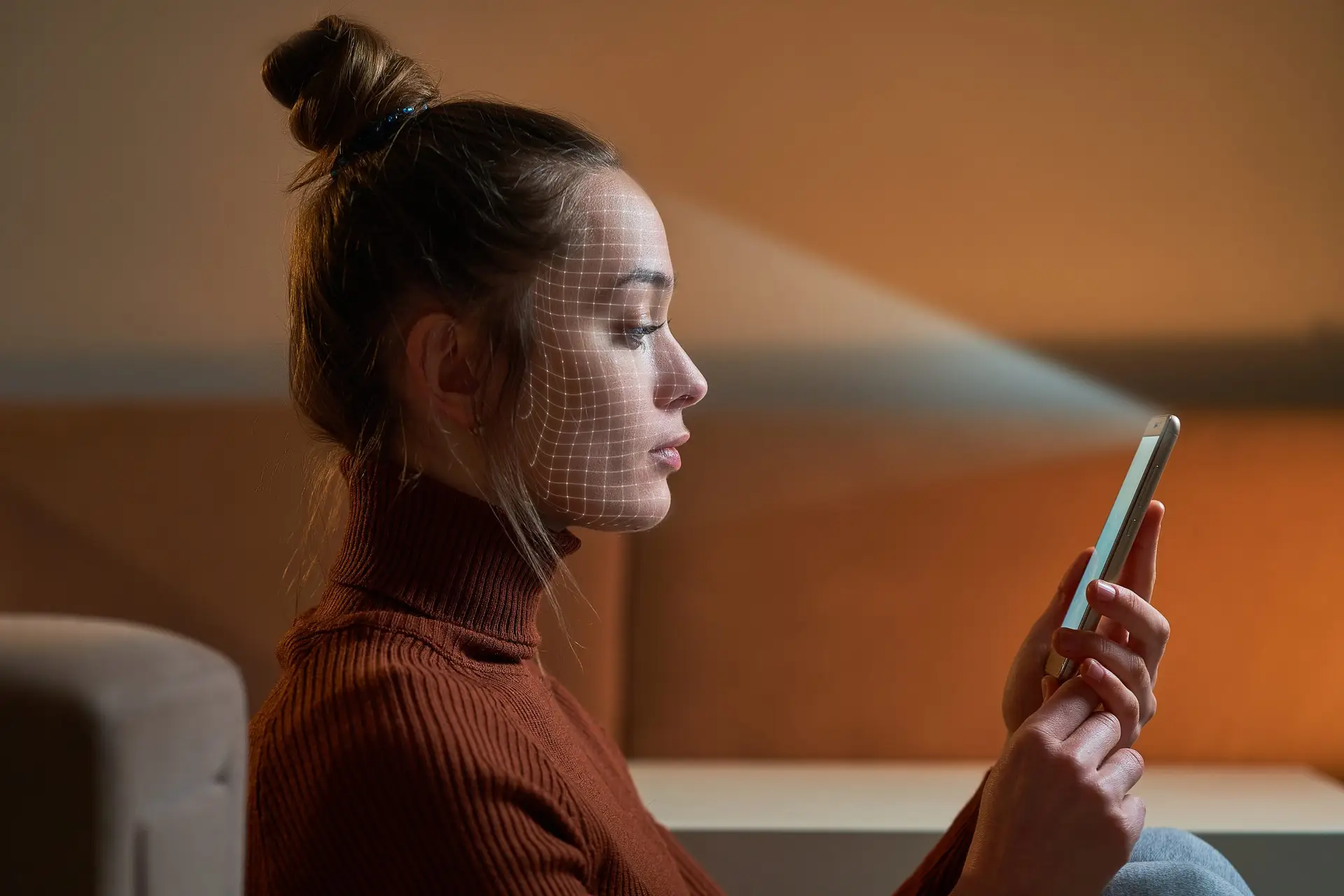How do you unlock your smartphone? If you’re like me, you use facial recognition. Every time I check my phone, the camera recognizes my face and unlocks my apps and notifications. The process is painless, and much faster than entering a password.
My phone isn’t the only one that uses this feature. Kid-friendly smartphones from Troomi Wireless also utilize facial recognition. This optional feature is available on all Troomi phones, and ensures that kids can secure their accounts and devices without needing to remember a password. After all, the best passwords use complex strings of numbers and letters that adults have a hard time remembering, let alone kids!
Before you and your kids start using facial recognition, however, it’s important to have a general idea of how the facial recognition algorithm works. So, let’s make like a dolphin and dive right in!
What Is Facial Recognition?
In a nutshell, facial recognition is the technology that computers use to recognize a human face.
Like a password, facial recognition is a method of identity verification. Websites and smartphones use facial recognition to secure accounts and ensure that only the proper user has access to private information. It’s much less hackable than a password, though!
Facial recognition is a form of biometric security, meaning it analyzes a person’s biological features to confirm their identity. It sounds kinda spooky, but technology uses biometrics more often than you might think—fingerprints and voice recognition are both examples. Facial recognition is a fairly foolproof way to secure smartphones and accounts, since no two people have the same face. Like fingerprints and personalities, our faceprints are totally unique—even if you’re an identical twin.
How Does Facial Recognition Work?
Just as you recognize your kids by the arch of their eyebrows and curve of their nose, technology uses facial recognition to recognize a person. The facial recognition algorithm differs depending on the circumstances and technology used, but here are the basic steps:
- A camera or video device, like the one on your smartphone, captures an image of your face.
- Facial recognition software turns your face into shapes and planes, much like an oil painter does when painting a portrait. Unlike an oil painter, however, the software then morphs the image into a mathematical formula called a facial signature.
- Your facial signature (also known as a faceprint) is stored in a facial recognition database along with millions of other faceprints.
- When tasked with identifying a person, the software compares these bundles of faceprints against each other until it finds the appropriate match.
What Is Facial Recognition Used For?
Facial recognition is used for all sorts of things, from unlocking your child’s phone to zipping you and your family through airport security. Here are some of the ways you might see facial recognition used:
- Airport security increasingly uses biometrics to speed up the travel process. Don’t worry, though, TSA guarantees that you can opt out of facial recognition if you like.
- Mobile phones, like those available from Troomi, unlock using facial recognition software. This ensures that your child’s phone remains locked and secure without them needing to remember a pesky password.
- Computers also use facial recognition to log you in. The laptop I write on uses facial recognition, and I get a lot of peace of mind from knowing that nobody can break into it.
- Social media websites use facial recognition to help you tag friends in photos. You know when you post a family picture on Facebook, and the website asks you, “Would you like to tag Aunt Melissa?” That’s facial recognition at work.
- Some colleges and businesses take roll and give presenters real-time feedback via biometrics.
Is Facial Recognition Safe?
In terms of security and verification, facial recognition is extremely safe. It’s easier for hackers to slide past passwords and anyone can forge a signature (just ask my parents; back in the day, I questionably forged their signatures on a few field trip permission slips). Facial recognition, on the other hand, makes your exact face the key to unlock an account—and nobody can copy that. Biometrics also work faster than entering a password, meaning that hackers have a near-impossible window of time to break into your account.
When it comes to privacy, however, facial recognition raises some concerns. According to a study by Georgetown University, half of all American adults have an image of their face stored in facial-recognition databases. This means that companies and government agencies can recognize half of American adults nearly anywhere. Most organizations safeguard this information closely, but the potential for informational abuse can be frightening. Do some research and determine whether the technology is trustworthy before you consent to using facial recognition.
Keep Your Child Safe with Troomi
The facial recognition algorithm is an exciting piece of technology that helps kids and parents alike maintain account security online. Making your child’s first phone a Troomi phone is another way to keep their digital data safe and secure, while empowering them in the process.
Click here to learn more about Troomi, then come back to the Troomi Blog for more great technology tips n’ tricks!

